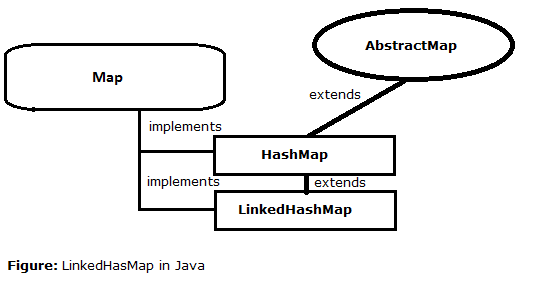Runtime Of Function To Generate A Hashmap Key
From the API doc ofHashMap: This implementation provides constant-time performance for the basic operations (get and put), assuming the hash function disperses the elements properly among the buckets. Since containsKey is just a get that throws away the retrieved value, it's O(1) (assuming the hash function works properly, again). The merge(Key, Value, BiFunctional) method of HashMap class is used to combine multiple mapped values for a key using the given mapping function. Bucket is actually an index of array, that array is called table in HashMap implementation. Toad data point license key generator. Java HashMap. You learned from the previous chapter, that Arrays store items as an ordered collection, and you have to access them with an index number (int type).A HashMap however, store items in 'key/value' pairs, and you can access them by an index of another type (e.g. One object is used as a key (index) to another object (value).
- Runtime Of Function To Generate A Hashmap Key Value
- Runtime Of Function To Generate A Hashmap Keyboard
- Runtime Of Function To Generate A Hashmap Key Value
- Runtime Of Function To Generate A Hashmap Keys
- Java.util Package Classes
- Java.util Package Extras
- Java.util Useful Resources
- Selected Reading
Runtime Of Function To Generate A Hashmap Key Value

HashMap in Java with Example By Chaitanya Singh Filed Under: Java Collections HashMap is a Map based collection class that is used for storing Key & value pairs, it is denoted as HashMapKey, Value or HashMap. It leaks memory (every newly allocated Node) when the Hashmap leaves the scope. A delete/remove function is missing. It doesn't replace the value within the existing Node on repeated puts with the same key but instead adds an additional Node every time. The size is fixed and therefore the hashmap get quickly degenerates into linked list search.
Description
The get(Object key) method is used to return the value to which the specified key is mapped, or null if this map contains no mapping for the key.
Declaration
Following is the declaration for java.util.HashMap.get() method.
Parameters
key − This is the key whose associated value is to be returned
Return Value
The method call returns the value to which the specified key is mapped, or null if this map contains no mapping for the key.
Exception
NA
Example
The following example shows the usage of java.util.HashMap.get()
Let us compile and run the above program, this will produce the following result.
Runtime Of Function To Generate A Hashmap Keyboard
null object can be used as a key or as a value. To successfully store and retrieve objects from a hashtable, the objects used as keys must implement the hashCode method and the equals method.
Runtime Of Function To Generate A Hashmap Key Value
An instance of Hashtable has two parameters that affect its performance: initial capacity and load factor. The capacity is the number of buckets in the hash table, and the initial capacity is simply the capacity at the time the hash table is created. Note that the hash table is open: in the case of a 'hash collision', a single bucket stores multiple entries, which must be searched sequentially. The load factor is a measure of how full the hash table is allowed to get before its capacity is automatically increased. The initial capacity and load factor parameters are merely hints to the implementation. The exact details as to when and whether the rehash method is invoked are implementation-dependent.
Generally, the default load factor (.75) offers a good tradeoff between time and space costs. Higher values decrease the space overhead but increase the time cost to look up an entry (which is reflected in most Hashtable operations, including get and put).
The initial capacity controls a tradeoff between wasted space and the need for rehash operations, which are time-consuming. No rehash operations will ever occur if the initial capacity is greater than the maximum number of entries the Hashtable will contain divided by its load factor. However, setting the initial capacity too high can waste space.
If many entries are to be made into a Hashtable, creating it with a sufficiently large capacity may allow the entries to be inserted more efficiently than letting it perform automatic rehashing as needed to grow the table.
Runtime Of Function To Generate A Hashmap Keys
This example creates a hashtable of numbers. It uses the names of the numbers as keys:
To retrieve a number, use the following code:
The iterators returned by the iterator method of the collections returned by all of this class's 'collection view methods' are fail-fast: if the Hashtable is structurally modified at any time after the iterator is created, in any way except through the iterator's own remove method, the iterator will throw a ConcurrentModificationException. Thus, in the face of concurrent modification, the iterator fails quickly and cleanly, rather than risking arbitrary, non-deterministic behavior at an undetermined time in the future. The Enumerations returned by Hashtable's keys and elements methods are not fail-fast.
Note that the fail-fast behavior of an iterator cannot be guaranteed as it is, generally speaking, impossible to make any hard guarantees in the presence of unsynchronized concurrent modification. Fail-fast iterators throw ConcurrentModificationException on a best-effort basis. Therefore, it would be wrong to write a program that depended on this exception for its correctness: the fail-fast behavior of iterators should be used only to detect bugs.
As of the Java 2 platform v1.2, this class was retrofitted to implement the Map interface, making it a member of the Java Collections Framework. Unlike the new collection implementations, Hashtable is synchronized. If a thread-safe implementation is not needed, it is recommended to use HashMap in place of Hashtable. If a thread-safe highly-concurrent implementation is desired, then it is recommended to use ConcurrentHashMap in place of Hashtable.